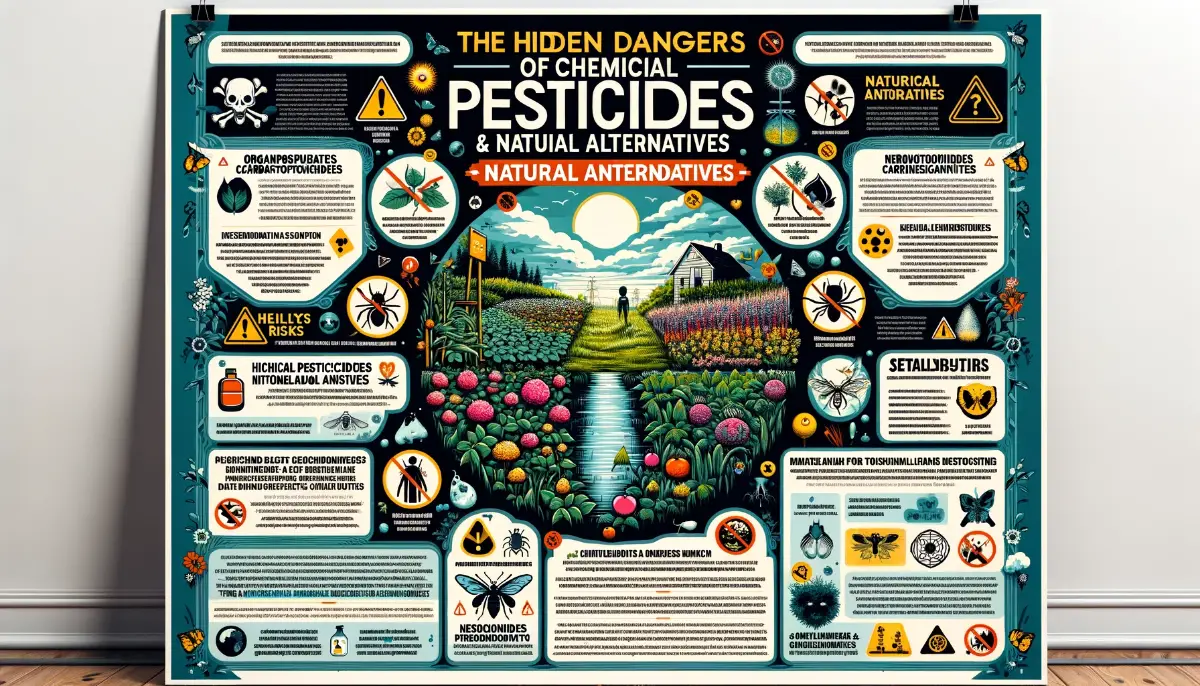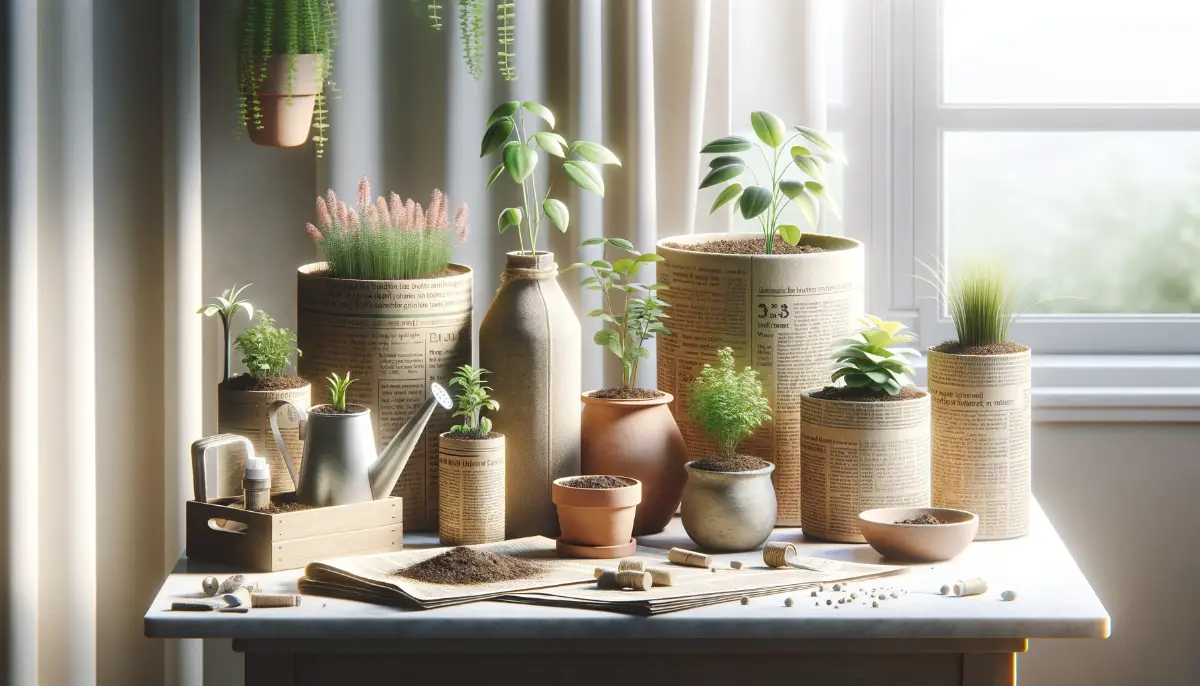In our quest for the perfect home garden or to keep our indoor plants thriving, it’s tempting to reach for chemical pesticides. They promise quick fixes to pest problems, but at what cost? The convenience of synthetic pesticides is overshadowed by their potential risks—to our health, our pets, and the environment.
The Hidden Dangers Within
Health Hazards
Synthetic pesticides used in homes can pose significant health risks. From skin and eye irritations to more severe issues like neurotoxicity, carcinogenicity, and endocrine disruption, the chemicals in these products can affect us profoundly.
Children and pets, in particular, are more susceptible to these dangers due to their smaller size and tendency to explore the world hands-on—and sometimes mouth-on.
When considering pesticides for home use, it’s crucial to prioritize safety for both humans and the environment. Here’s a list of pesticide types and specific chemicals that are generally recommended to avoid or use with extreme caution due to their potential health risks or environmental impact:
1. Organophosphates
- Examples: Chlorpyrifos, Malathion
- Concerns: Highly toxic, affecting the nervous system; linked to developmental issues in children.
2. Carbamates
- Examples: Carbaryl, Aldicarb
- Concerns: Similar to organophosphates, they can affect the nervous system; potential carcinogens.
3. Neonicotinoids
- Examples: Imidacloprid, Clothianidin
- Concerns: Harmful to bees and other pollinators, contributing to colony collapse disorder.
4. Pyrethroids
- Examples: Permethrin, Cyfluthrin
- Concerns: Toxic to aquatic life and beneficial insects; potential neurotoxicity in humans.
5. Glyphosate
- Concerns: Widely used herbicide with potential links to cancer; can harm aquatic environments.
6. Atrazine
- Concerns: Herbicide linked to endocrine disruption in wildlife; potential contaminant of drinking water.
Environmental Impact
Beyond our front doors, these chemicals don’t discriminate, affecting non-target species and polluting ecosystems. Waterways can become contaminated, beneficial insects including bees and butterflies can be harmed, and soil health can deteriorate, disrupting the delicate balance of our local environments.
Resilience of Pests
The overuse of chemical pesticides can lead to the development of resistant pest populations. This not only makes future control more difficult and requires even stronger chemicals but also further harms non-target species and the environment.
Nature’s Bounty: Safer Alternatives
Embracing a natural approach to gardening and plant care doesn’t mean accepting pests and diseases as inevitable. Many safer, effective alternatives can help maintain healthy plants without the negative side effects of chemical pesticides.
Cultural Practices
Healthy plants are less likely to succumb to pests and diseases. Choose the right plant for the right place, ensure adequate sunlight, water, and nutrients, and you’ll foster resilience in your garden.
Physical and Mechanical Controls
Barriers, traps, and manual removal of pests can be highly effective and targeted ways to deal with unwanted visitors without resorting to chemicals.
Biological Controls
Encouraging or introducing beneficial insects and microorganisms can naturally keep pest populations in check. Ladybugs, lacewings, and beneficial nematodes are just a few allies in the natural gardener’s toolkit.
Botanical and Mineral-Based Pesticides
Products derived from plants (like neem oil and pyrethrin) or minerals (such as diatomaceous earth) can offer safer pest control solutions when used correctly.
Encouraging Nature’s Balance
Incorporating a natural approach into your gardening practices isn’t just about replacing one product with another; it’s about fostering a balanced ecosystem in your garden. Companion planting, for example, can enhance plant health and deter pests naturally, while composting improves soil health, supporting stronger, more resilient plants.
A Call to Action
We have the power to make healthier choices for our homes and gardens, choices that respect the intricate web of life surrounding us. By embracing natural plant care methods and reducing our reliance on chemical pesticides, we not only safeguard our health and that of our pets but also protect the environment for future generations.
It’s time to turn back to nature’s wisdom, where the solutions to many of our gardening challenges have existed all along. Let’s cultivate our gardens with care and consciousness, nurturing a world that thrives in harmony.
FAQs: Embracing Natural Plant Care and Reducing Pesticide Use
Why are chemical pesticides harmful to my health?
Chemical pesticides can pose various health risks, including skin and eye irritation, neurotoxicity, potential links to cancer, and disruptions to the endocrine system. Children and pets are particularly vulnerable to these effects.
How do pesticides affect the environment?
Pesticides can contaminate waterways, harm beneficial insects like bees and butterflies, degrade soil health, and disrupt local ecosystems by killing non-target species.
Can pests really become resistant to pesticides?
Yes, overuse of chemical pesticides can lead to pests developing resistance, making them harder to control over time and necessitating the use of stronger chemicals.
What are some natural alternatives to chemical pesticides?
Natural alternatives include cultural practices, physical and mechanical controls, biological controls, and botanical or mineral-based products like neem oil, pyrethrin, and diatomaceous earth.
How do I choose the right plant to reduce pest issues?
Select plants that are well-suited to your local climate, soil conditions, and sunlight availability. Native and heirloom varieties often have natural resistance to local pests and diseases.
What are cultural practices in gardening?
Cultural practices involve choosing the right plant for the right place, ensuring proper sunlight, water, and nutrient levels, and fostering overall plant health to naturally deter pests.
What are some examples of physical and mechanical pest controls?
These can include using barriers or traps to protect plants, manually removing pests, or employing water jets to dislodge pests from plants.
How can beneficial insects help in my garden?
Beneficial insects, such as ladybugs, lacewings, and beneficial nematodes, naturally prey on pest insects, helping to keep their populations under control without chemicals.
Are botanical and mineral-based pesticides always safe?
While generally safer than synthetic chemicals, even natural pesticides can have adverse effects if not used correctly. Always follow label instructions and use them as part of a broader integrated pest management strategy.
How can I start transitioning to a more natural gardening approach?
Begin by assessing your garden’s current health and pest issues, then gradually incorporate more natural practices like improving soil health, using physical pest controls, and encouraging beneficial insects. Educate yourself on the specific needs and vulnerabilities of your plants, and be patient as you learn to balance your garden’s ecosystem naturally.









